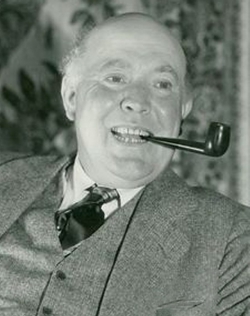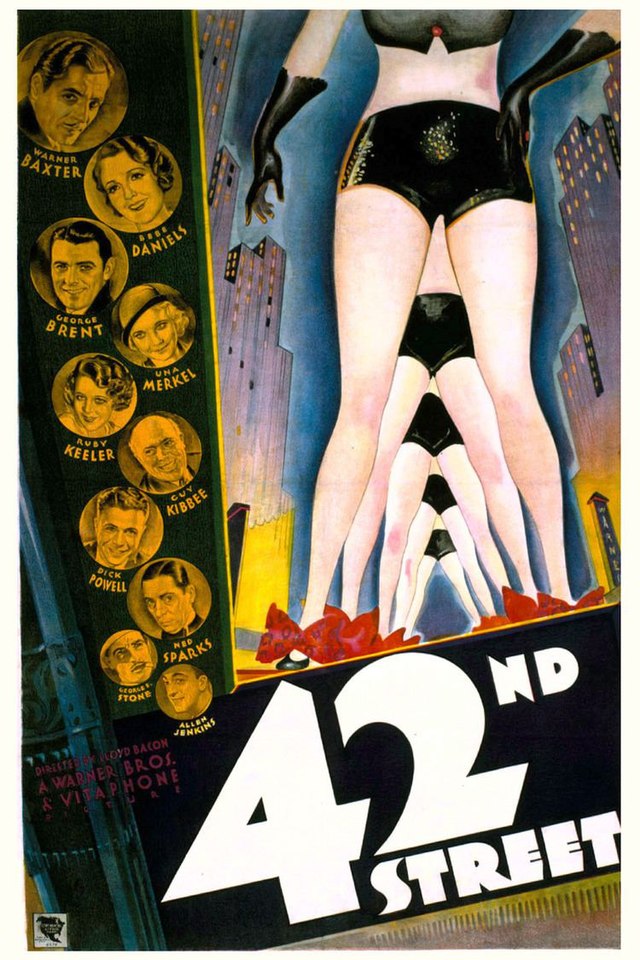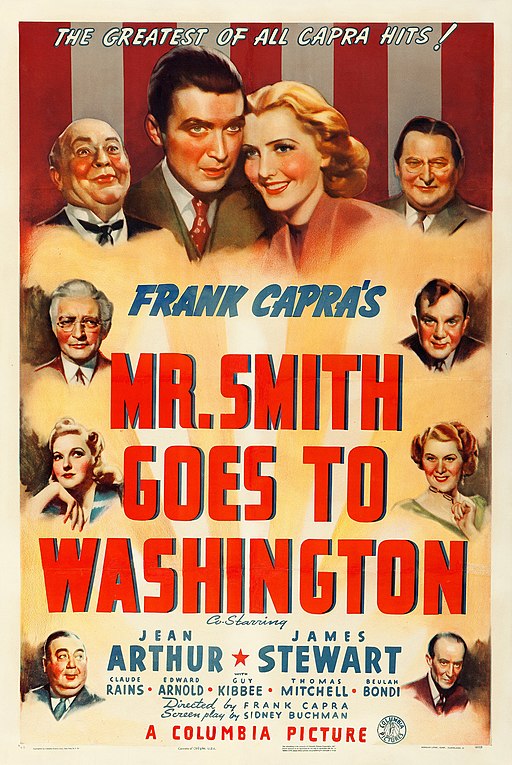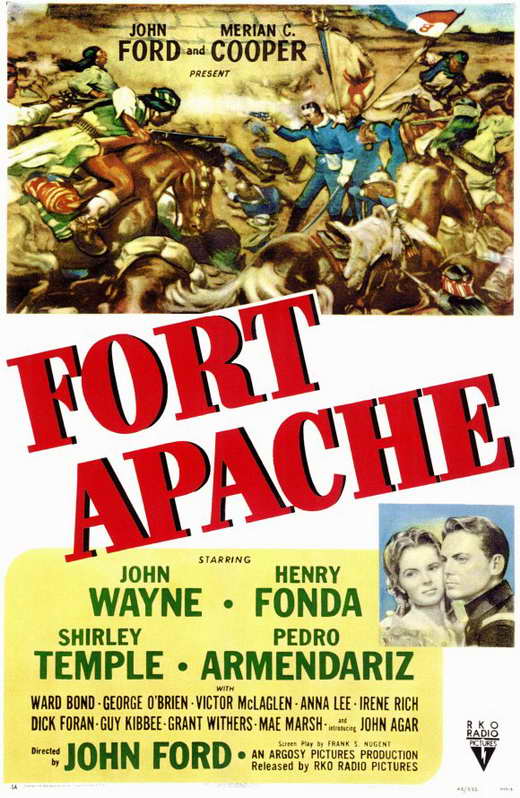Guy Kibbee
back| Full Name | Guy Bridges Kibbee |
| Stage Name | Guy Kibbee |
| Born | March 6, 1882 |
| Birthplace | El Paso, Texas, U.S. |
| Died | May 24, 1956 (aged 74) in East Islip (Long Island), New York |
| Buried | Unknown |
| Married to | Helen E. Shay (m. Sept 2, 1918 – div. 1923) - Esther “Brownie” Reed (m. 1925 – his death 1956) |
| Children | With Helen Shay: Robert Joseph Kibbee (1921–1982), future Chancellor of CUNY and John Shay Kibbee - With Brownie Reed: Shirley Ann and Guy Kibbee Jr. |
| Notable films | Rain (1932) - 42nd Street (1933) - Captain Blood (1935) - Mr. Smith Goes to Washington (1939) |
Guy Kibbee
Hollywood’s Homespun Heart
Guy Kibbee (1882–1956) was a beloved American character actor known for his warm, comedic presence in over 100 films during Hollywood’s Golden Age. Born in El Paso, Texas, he began performing on Mississippi riverboats before moving to Broadway and then Hollywood. Kibbee became a Warner Bros. favorite in the 1930s, often cast as jovial fathers, bumbling businessmen, or small-town figures.
Memorable roles include 42nd Street, Gold Diggers of 1933, Mr. Smith Goes to Washington, and Our Town. He starred in the Scattergood Baines series and even inspired the dish “Guy Kibbee eggs.” Off-screen, he was known for his love of golf, food, and family.
Though never awarded formally, he remains cherished for his warmth, timing, and charm. He died in 1956 from complications of Parkinson’s disease, leaving behind a legacy of humor and heart.
Related
Guy Kibbee (1882 – 1956)
Biography ad Movie Career
Guy Bridges Kibbee, born on March 6, 1882, in El Paso, Texas, emerged as one of Hollywood’s most beloved character actors during the 1930s and 1940s. Known for his jovial, fatherly, and sometimes bumbling screen persona, Kibbee was far more than comic relief—he embodied a kind of rustic warmth that resonated with Depression-era audiences craving familiarity and humanity.
Early Life and Upbringing
Guy was born into a print-loving family. His father, James A. Kibbee, was a newspaper editor and printer who moved frequently for work, eventually settling the family in the American West. From an early age, Guy was immersed in the world of type-setting and newsprint. He began setting type at the age of seven, and the sounds and smells of the print shop left a lasting impression on him.
However, Kibbee was drawn not to journalism, but to the allure of the stage. At the age of 14, he ran away from home and joined a traveling theatrical troupe. He spent much of his youth working in riverboat theater companies on the Mississippi River, gaining experience as an actor while learning the nuances of timing, voice projection, and audience connection. These early experiences gave him a raw but authentic theatrical training—one grounded not in theory but in relentless performance.
Path to Success
After years honing his craft on the riverboats and in regional theater, Kibbee made his way to the stock theater circuits in the American Midwest and West Coast. He eventually broke into Broadway in the 1920s, where his expressive face and booming voice made him a natural fit for comedy and light drama. He appeared in the Broadway play Torch Song in 1930, a pivotal moment that led to his discovery by Hollywood talent scouts.
With the advent of sound in cinema, studios were eager to find experienced stage actors who could bring lively vocal expression to the screen. Kibbee, with his strong voice and animated expressions, was a perfect match. He signed with Paramount Pictures, but his most notable film work came during his time with Warner Bros., where he appeared in a string of box-office hits throughout the 1930s.
Hollywood Career
Kibbee became a reliable and endearing character actor in more than 100 films. He often played lovable old coots, pompous businessmen, or absent-minded fathers. Among his most memorable roles were:
- Abner Dillon in 42nd Street (1933), a sugar daddy funding a Broadway production.
- Faneul H. Peabody in Gold Diggers of 1933, where he brought a touch of human comedy to a Depression-era musical.
- Joe Horn in Rain (1932), a barkeep on a tropical island.
- Governor Happy Hopper in Mr. Smith Goes to Washington (1939), one of his most respected supporting performances.
- Mr. Webb in Our Town (1940), portraying the newspaper editor and voice of tradition in the small town of Grover’s Corners.
He also headlined the Scattergood Baines film series in the early 1940s, playing a wise and homespun general store owner. Though rarely a leading man in the romantic sense, Kibbee’s face became synonymous with trust, humor, and decency.
Personal Life and Marriages
Kibbee’s off-screen life was rich and multifaceted. He married Helen Shay in 1918, and together they had children, including Robert J. Kibbee, who later became chancellor of the City University of New York. However, the marriage ended in divorce in 1923.
In 1925, he married Esther “Brownie” Reed, a former actress. The couple remained together until his death, and by most accounts, they shared a loving and supportive partnership. Kibbee was the father of several children—some sources suggest as many as seven—with at least four confirmed, including John Shay Kibbee, Guy Kibbee Jr., and a daughter Shirley Ann.
Despite the bustling nature of his career, Kibbee was devoted to family. He was known to take time off from work to be with his children and kept his private life relatively quiet in an era of scandal-ridden Hollywood.
Passions and Personality
Guy Kibbee was a man of varied interests. He loved golf, maintaining a respectable handicap around 10 or 11. He also enjoyed playing cards, watching baseball, and was known for his appetite and culinary appreciation. One dish even became associated with him—"Guy Kibbee eggs"—a fried egg cooked in the center of a slice of bread, featured in the film Mary Jane’s Pa (1935).
Kibbee was widely regarded as a jovial, generous, and down-to-earth man, known for his kindness on set and willingness to help younger actors. Though not a megastar, he was one of those rare character actors whose presence could uplift a film and whose work ethic was deeply respected by his peers.
Final Years and Death
By the early 1950s, Kibbee began to withdraw from acting as his health declined. He had developed Parkinson’s disease, a progressive neurological disorder that slowly affected his speech and movement. His final film appearances came in the late 1940s, including roles in John Ford’s Fort Apache and 3 Godfathers.
Kibbee spent his final years at the Percy Williams Home, a retirement facility for actors in East Islip, Long Island, New York. He died there on May 24, 1956, at the age of 74, due to complications related to Parkinson’s disease.
While the precise details of his burial are not widely published, it is believed he was interred on Long Island, likely near East Islip.
Legacy
Guy Kibbee may never have been a leading man, but he was an indispensable presence in dozens of classic American films. His performances provided warmth, humor, and emotional grounding. For audiences during the Great Depression and beyond, Kibbee represented the neighbor, the father, the friendly face at the general store—a reminder of decency during difficult times.
His work continues to live on in TCM showings and classic film retrospectives, and his legacy as a character actor endures, a model of how supporting players can leave an unforgettable mark on American cinema.
Physical Characteristics of Guy Kibbee:
- Height: Approximately 5 feet 10 inches (178 cm)
- Build: Stocky or portly, with a rounded face and broad shoulders
- Weight: Estimated around 200–220 pounds (90–100 kg) during his peak film years
- Hair: Light gray to white (graying early in life)
- Eyes: Light-colored (commonly cited as blue or gray)
Distinctive features:
- Round, expressive face
- Receding hairline
- Warm, genial smile
- Slight waddle or shuffle in movement (often played for comedic effect)
- Frequently seen in spectacles for roles, reinforcing his scholarly or fatherly image
Short Video Bio of Guy Kibbee
Guy Kibbee’s Acting Style
Guy Kibbee was not a matinee idol or a tragic leading man. He didn’t play outlandish villains or tortured heroes. Instead, his acting style lived in the space between comfort and comedy—the familiar and the delightfully eccentric. In an era of grand gestures and stylish melodrama, Kibbee carved a niche with a style that felt natural, lived-in, and deeply human.
Comic Timing and Physical Warmth
At the heart of Kibbee’s craft was an instinctive understanding of comic rhythm. He knew precisely when to pause, when to raise an eyebrow, when to let a line land with a chuckle rather than a punch. His humor wasn’t forced; it emerged from the rhythms of everyday life.
He often played characters who were slightly befuddled but never foolish, giving audiences permission to laugh while still respecting the character’s dignity. Whether as a fussy hotelier or a love-struck banker, he used his portly figure, round face, and expressive eyes to channel both physical comedy and emotional warmth. His body language was loose but purposeful—he shuffled, waddled, or leaned into his scenes like a man truly embedded in the world he inhabited.
Theatrical Precision Without Theatrics
Kibbee came from the old school of stock theater and riverboat repertory, and it showed—in the best way. He brought with him the discipline of clear diction, projection, and presence, but toned it down to suit the camera. His stage background gave him a sense of vocal confidence and movement, but he never felt too “big” for film. He made the transition to talkies effortlessly because his acting wasn’t about volume—it was about character texture.
What distinguished Kibbee was his ability to deliver exposition-heavy dialogue with ease, often masking it in charm or exasperation. His line delivery felt like natural conversation, even when the words were wrapped in 1930s studio-speak.
Master of the Middle Class Archetype
Kibbee specialized in a certain kind of Americana everyman: the rotund storekeeper, the small-town judge, the slightly pompous but ultimately good-hearted father. These roles could easily turn into caricatures in lesser hands, but Kibbee brought them to life with empathy and subtlety. He never mocked his characters, no matter how silly or clueless they might seem. He respected them—and so did audiences.
His characters often began as figures of comic absurdity and ended as people of substance. That arc—from buffoonery to benevolence—was a signature part of his style.
Soft Irony and Emotional Accessibility
There was always a touch of soft irony in Kibbee’s performances. He seemed to be in on the joke, yet never broke the fourth wall. His characters were often overwhelmed by modernity, baffled by youth, or exasperated by bureaucracy—but Kibbee didn’t play them as victims. Instead, he made them part of the world’s comedy.
That’s why his performances feel timeless: he communicated with his eyes, his pauses, his posture. He had the rare ability to be both comedic and comforting in the same moment—a trait shared by actors like Thomas Mitchell and Edward Everett Horton, but uniquely his own in its blend of pathos and play.
Legacy of Subtle Craftsmanship
Kibbee wasn’t a scene-stealer, but a scene-enhancer. Directors loved working with him because he could anchor a scene without upstaging the stars. Whether playing opposite James Cagney, Barbara Stanwyck, or Jimmy Stewart, he supported the film’s emotional center without ever drawing too much attention to himself.
He didn’t change with the method-acting revolution of the late 1940s, but his work anticipated the naturalism that would come to dominate later cinema. His characters were fully realized—not showy, but sincere.
Notable Movie Quotes
“42nd Street” (1933)
As Abner Dillon, the show's backer:
“Money? I’ve got money! I’ll back the show myself if I have to!”
This line is delivered with pomp and bravado—perfectly illustrating his role as the blustery but good-natured financier smitten with a chorus girl.
“Gold Diggers of 1933”
As Faneul H. Peabody (while being seduced):
“I didn’t come here to be insulted!”
Pause
“But go on, I like it.”
A classic double entendre, delivered with perfect comic timing, showing Kibbee's talent for sly humor without ever seeming crude.
“Babbitt” (1934)
As George F. Babbitt:
“A man can’t just sit around and wait for something to happen. He’s got to do something—even if it’s wrong.”
This line summarizes the inner conflict of his character in one of his few leading roles: a middle-aged businessman yearning to break from conformity.
“Mary Jane’s Pa” (1935)
As Sam Preston, talking to his daughter:
“You know, it’s a funny thing about being a father—you never stop learning how to do it.”
A touching line that resonated with audiences during the Depression era, delivered with softness and self-deprecating charm.
“Mr. Smith Goes to Washington” (1939)
As Governor Hopper:
“I'm just a little man, but I'm trying to do the right thing.”
Though a supporting character, Kibbee’s delivery of this line adds to the film’s larger themes of moral conscience and civic duty.
“Our Town” (1940)
As Mr. Webb:
“No bridegroom should see his father-in-law on the day of the wedding. Or if he does, he should be mighty careful what he says.”
A humorous bit of small-town wisdom, spoken in his gentle, knowing tone. A perfect example of his ability to convey heart through humor.
Personal Quote
Kibbee once said in an interview:
“I never minded being the second banana. Someone’s got to hold the fruit bowl.”
This quote—humble, humorous, and wise—captures his personality both as an actor and a man who understood the value of supporting roles.
Awards and Recognition
Major Film Awards
-
Academy Awards (Oscars):
No nominations or wins.
Kibbee’s roles were almost always in the supporting or ensemble categories, and during the height of his career (1930s–40s), Academy recognition for character actors was rare, particularly for comic and light supporting parts. - Golden Globes / BAFTAs / Other Major Awards:
No known nominations or wins.
Studio and Industry Recognition
- Warner Bros. Contract Player (1930s):
Kibbee was a valued member of Warner Bros.’ “stock company” of reliable performers, alongside actors like Allen Jenkins, Frank McHugh, and Aline MacMahon. Though unofficial, this was a sign of professional stability and creative trust in the studio era. - Trusted Supporting Actor in Capra Films:
Kibbee’s role in Mr. Smith Goes to Washington (1939), directed by Frank Capra, placed him within a culturally significant American film, which won several Academy Awards and is now preserved by the Library of Congress.
Cultural Recognition and Legacy
- TCM (Turner Classic Movies):
Kibbee’s films are frequently featured in Turner Classic Movies programming, and his performances are often highlighted in retrospectives about character actors of the 1930s and 1940s. - “Guy Kibbee Eggs”:
While not a formal honor, the breakfast dish known as “Guy Kibbee Eggs” (an egg cooked in a slice of toast, popularized in the 1935 film Mary Jane’s Pa) became a small culinary tribute and pop culture footnote tied to his name. - Referenced in Books and Documentaries:
Film historians and authors have recognized Kibbee in books about character actors, such as "The Unsung Heroes of the Studio Era" and in classic film commentary. He is regularly cited as a touchstone of warm, small-town, Depression-era Americana.
Posthumous Recognition
- Grave and Film Community Tributes:
Though his burial site is not heavily publicized, Kibbee’s name appears in databases of classic Hollywood stars, and his work continues to be preserved and discussed in fan sites and old-Hollywood archives. - Mentioned in Film Studies Curricula:
In university-level courses focused on early American cinema, the Warner Bros. ensemble acting model (of which Kibbee was a key part) is often taught as an example of reliable studio-era casting.
Movies with Guy Kibbee
1931
- City Streets – Pop Cooley, a sympathetic father figure in a gritty crime drama.
- Man of the World – Harry Taylor, providing warmth in this drama about class and redemption.
1932
- Rain – Joe Horn, a tropical barkeep drawn into moral conflict in this drama starring Joan Crawford.
- Union Depot – “Scrap Iron” Scratch, a comedic local in this train-station tale.
- High Pressure, Taxi!, Fireman, Save My Child, The Crowd Roars, and more – typically playing pop‑type characters offering light-hearted relief.
1933
- 42nd Street – Abner Dillon, a charming backer of a Broadway musical.
- Gold Diggers of 1933 – Faneuil H. Peabody, a businessman with a comic edge amidst Depression-era musical ambitions.
- Footlight Parade, Lady for a Day, Havana Widows, The Silk Express, Lilly Turner – familiar affable or flustered figures supplying support and comic relief.
1934
- Babbitt – George F. Babbitt, in a rare starring role, portraying a businessman questioning his own conformity.
- Dames, Wonder Bar, Merry Wives of Reno, Big Hearted Herbert – showcasing his knack for comedic and authoritative supporting roles.
1935
- Captain Blood – Hagthorpe, adding levity to this high‑seas swashbuckler with Errol Flynn.
- Mary Jane’s Pa – Sam Preston, a doting father who introduces the “Guy Kibbee eggs.”
- Comedies like While the Patient Slept, Going Highbrow, and Don't Bet on Blondes, playing comedic authority figures.
1936
- Captain January and Little Lord Fauntleroy – kindly paternal figures befriending children.
- In musicals/dramas like I Married a Doctor and The Captain’s Kid, embodying supportive male leads.
1937
- Mama Steps Out – Leonard “Len” Cuppy, an imperious American tourist navigating high-society France.
- The Big Shot – Dr. Bertram Simms, a small-town vet who inherits a fortune and uncovers a crime conspiracy.
1938
- Stars in dramas (Three Comrades) and comedies (Joy of Living, Rich Man, Poor Girl), often as warm-hearted patriarchs or mentors.
1939
- Mr. Smith Goes to Washington – Governor "Happy" Hopper, a conflicted politician in Frank Capra’s classic.
- Other roles in Babes in Arms, It's a Wonderful World, Let Freedom Ring, maintaining his signature supportive presence.
1940
- Our Town – Mr. Webb, the steadfast newspaper editor anchoring the community's spirit.
- Chad Hanna, Street of Memories – continuing his tradition of small-town authority figures.
1941
- Scattergood Baines and its sequels (Pulls the Strings, Meets Broadway, Pulls the Strings) – Kibbee portrays a genial store-owner solving local dilemmas.
- Also seen in It Started with Eve as a bishop and Design for Scandal as a judge.
1942
- This Time for Keeps – Harry Bryant, a supportive father in this MGM comedy.
- Whistling in Dixie, Miss Annie Rooney, Tish, Sunday Punch – typically judges, grandfathers, or small-town dignitaries.
1943
- Girl Crazy – Dean Phineas Armour, presiding over campus chaos in this musical comedy.
- Cinderella Swings It – Scattergood Baines in a musical twist to the franchise.
- Also appeared in Power of the Press as Ulysses Bradford.
1944–1945
- Dixie Jamboree (1944) – Captain Jackson; The Horn Blows at Midnight (1945) – a befuddled radio chief.
1946–1947
- Featured in light Westerns and comedies: Cowboy Blues, Gentleman Joe Palooka, Lone Star Moonlight, Over the Santa Fe Trail, The Red Stallion, The Romance of Rosy Ridge.
1948
- Fort Apache – Captain Dr. Wilkens in John Ford’s classic Western.
- 3 Godfathers – A kindly judge in this Western narrative—his final film role.











